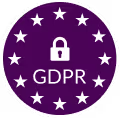Leadership Coaching
Leadership coaching is valuable for employees in any company where a Growth Mindset culture is at play. Executives might be at the top of the organizational hierarchy, but leaders can be found anywhere. And even when someone is clearly a natural-born leader, their skills can always be further honed. By nurturing the leadership abilities of those with the talent and energy to drive success, companies can reap valuable benefits.
What Is Leadership Coaching?
A leader is both a person who has a certain position within an organization, and a person with the ability to motivate, provide advice to, or control others. Although a formal leader has the responsibility to achieve certain results, a non-official leader has the opportunity to create success for themselves and the people around them. In both cases, the leader relies on various inborn talents and acquired workplace skills that put them at the front of their group.
Although leadership skills can be enhanced through training and mentoring programs, a coach makes the ideal partner. The close, personal observation that comes with a coaching style of learning is best for dealing with the complex tasks related to leadership. To back this up, 48% of leaders prefer external coaching as the method for implementing their L&D programs.
Leadership coaching is the enhancement, through a coaching-style expert, of the skills that allow a person to guide an organization. Workplace coaching serves to strengthen a leader’s skills and knowledge, including elements of work-life balance. It is seen as such an effective method that 30% of business coaches instruct only in the area of leadership.
The State of Leadership Coaching Programs
Organizations in search of more effective leaders are turning to leadership coaches in large numbers. According to this year’s business coaching report, the market is projected to increase by 2.6% in 2024. But the mentoring and leadership segment of this industry is forecast to grow even more rapidly at an annual rate of 11% through to 2032.
What Are the Benefits of Leadership Coaches?
Companies that successfully implement leadership coaching programs can avoid the many pitfalls of insufficient leadership, which affects 77% of organizations. Successful coaching in general provides many advantages, and leadership coaching is no exception. According to the International Coaching Federation’s Global Coaching Study, leadership coaching provided a positive ROI for 86% of companies.
Aside from financial benefits, leadership coaches are helpful as a means of refreshing a leader’s approach to their job. An experienced leadership coach will have “seen it all before” but not rush to judgment. Instead, they will ask probing questions that empower the leader to realize their own solutions to challenges. This can take the form of:
- Seeing their own behavior from a new perspective
- Thinking about their role, organization, or strategy in a different way
- Understanding that an external barrier has been holding them back
Once the leader gets a feel for how they need to improve, the coach will provide suggestions for practical moves that the leader can take. In addition, the leadership coach will act as an “accountability partner” who makes sure that the leader stays on course for the long run.
One of the most common results of a leadership coaching program is improved communication. This skill is at the core of what many leaders do because much of their time is spent explaining, critiquing, discussing, and presenting. They do so with audiences ranging from a single employee to (in the case of executives) the entire organization. Moreover, there are various forms and styles of communication that depend on the audience and the setting. For these reasons, HR teams often work with specialist communications coaches as part of a leadership development program.
The numerous aspects of the coach-leader relationship mean that every engagement is different. When discussing the benefits they’re aiming for, each leader will have their own opinion. Even though ROI is a popular one, there are many other factors that should be discussed with a leader when assessing the quality of a leadership development program, such as:
- Improved interpersonal relationships
- Reduced stress
- More job satisfaction
- Higher engagement rate
What Skills Do Leaders Develop Through Coaching?
The most common skills addressed by effective leadership coaching programs are self-awareness, communication skills, change management, and strategic thinking. However, each leader will have their own areas in need of development, and these often depend on the level of the organization at which the employee is positioned.
Senior managers tend to have a strong skill set because they have spent years developing their abilities, which is (at least) part of the reason why they have climbed the organizational ladder. In these cases, coaching concentrates on major individual or company challenges that encompass many skills; the leader needs to understand how to apply the skills that they already have. Common coaching subjects for experienced managers include long-term planning, strategic thinking, and change management.
On the other end of the spectrum are new leaders who have yet to encounter many of the situations that will expose their personal skill gaps. They often make good candidates for team coaching sessions. Entry-level employees who show leadership potential tend to receive coaching for interpersonal skills and basic task execution as they ‘learn the ropes’ and hone the manner in which they relate to their peers. According to the Harvard Business Review, new leaders should focus on skills such as adaptability, emotional intelligence, and humility.
For mid-level managers, coaching is an immensely valuable opportunity. These employees are past the stage of understanding their basic abilities and have a good idea of where they need to improve. The focus of coaching usually covers the leadership of essential teams within the organization and proficiency in administering their associated activities. McKinsey found that mid-level managers should develop skills related to planning and enabling strategy, problem-solving, communicating complex ideas, and guiding employees towards better performance.
Why Is Coaching the Right Method for Leaders?
Technical skills are hard skills. When an employee has a weakness in an area of technical skill, it is easy to diagnose. Similarly, once they have taken courses to improve performance, evaluating their abilities is a matter of objective testing.
Leadership skills, as a subset of workplace soft skills, are much more complex. When a leader seeks to improve their abilities, challenges are often related to personality, psychology, work and life experience, personal goals, interaction with other employees, and so on. A coach unravels a leader’s various performance issues and connects them with these factors. This can take a while, and so a coaching engagement involves multiple sessions and can last for many months.
What About Mentors?
Both internal and external mentors can make valuable partners for leaders who want to improve. However, a mentor is usually someone who has experience in the industry where their client works. This can influence the mentor’s judgment, even unconsciously. They will approach the engagement with certain biases that affect the advice that they give to the leader, instead of allowing the leader to choose their own path forward. For leaders who want to change their way of thinking or get an objective opinion, mentors are not the best advisors.
On the other hand, mentors are an excellent means for solving strategic problems. They might have been in similar situations and can help the leader think out of the box. For this reason, even well-known leaders use mentors, such as the famous example of Mark Zuckerberg being mentored by Steve Jobs.
Leadership Coaching vs. Executive Coaching
Many organizations, and even leadership coaches, consider these two terms to be synonymous. However, for any company with a Growth Mindset, there is definitely a difference. As stated above, a non-official leader is still a leader. A company culture that can empower leaders at any level of the organization is built on the idea that everyone is capable of growth. Leadership development programs in such organizations will be open to all employees (although as few as 5% of companies enable leadership development across the organization).
In comparison, executive coaching is specifically for C-suite employees. There is a significant degree of overlap between a professional development program for executives and for employees in general. However, because the function of executives is critical for success, the top executive coaches are often specialists. This is true for several reasons:
- Executives tend to have busy schedules, even without needing to devote time to a coach. An executive coach will know how to accommodate their client in a way that least interferes with the executive’s tasks.
- The executive team needs to perform at the highest level in order for the company to properly operate. However, there are often complex relationships among such leaders. An executive coach will understand the nuances of working with both individual executives and the team as a whole.
- Similarly, people on the executive team often have large egos. An effective executive coach will be able to deal with this aspect of an engagement. Their level of experience must demonstrate to busy leaders that they are investing their time in a development program that will have significant benefits.
When Is a Leadership Coach Needed?
Companies will commonly hire a coach when there are obvious performance issues either with individual employees or a whole team. This is even more so when the worker is hired from outside the company, and/or when the hiring process is completed quickly (for example, due to pressure to deal with an unplanned departure).
There is a good chance that a relatively unknown employee has a lack of leadership soft skills that was not detected during interviews. But it’s nearly impossible to understand every area of weakness for new employees, or even experienced ones. This is one of the reasons why innovative companies use a continuous development program.
Similarly, a new worker often encounters unforeseen circumstances that they do not have the skills to handle. For instance, certain organizational practices can lead to a kind of “culture shock”. A new position can involve tasks that neither the HR team or the employee saw as a challenge, and yet they turn out to be an issue. An example is a company with a fairly flat organizational structure and a high level of employee initiative. It might be a problem for a recently hired manager coming from a traditional company to deal with employees who speak openly.
However leadership coaching programs don’t need to be the result of an emergency. Optimizing growth opportunities for every worker, perhaps as part of a career development program, is a good reason to hire a leadership coach. Additionally, employees who are headed to positions of more responsibility will want to develop their leadership skills in advance.
A Surprising Fact About Leadership Coaches
There is a difference between the initial goals of a leadership coaching program, and what the coach actually does. According to this graph from Harvard Business Review, only 3% of coaches are hired to address personal issues, but 75% eventually deal with them.
Apparently, methods such as “clean coaching/clean language” lead to such outcomes. A clean coach will act more as a guide than an advisor, and will let the client make their own conclusions about ways to improve performance. Much of the time, the leader realizes that workplace issues are related to their personal life. An effective leadership coaching program will be prepared to handle this mix of factors. Hopefully, the coach is able to make the leader’s personal life more stable and meaningful while also helping them professionally.
How Leadership Development Programs Function
From the point of view of an employee, leadership development initiatives can take several forms. (In the background, however, HR is busy with many unseen activities in a situation that is similar to career management vs. career development).
Many coaches and L&D practitioners start by separating leaders according to categories such as role, seniority, and strategic needs. Particularly for junior leaders, there are often commonalities in their skill gaps, and a coach-led workshop with a few employees can be an ideal setting for upskilling rapidly without losing focus on the individual. A workshop also provides opportunities for interaction, peer assessment, and the sharing of experiences. Hopefully, the workshop phase will result in an employee getting at least most of the way toward proficiency. Here are a few leadership coaching styles that apply to groups:
Instructional. In this setting, the team looks to solve a defined problem. The coach will closely guide the team as it follows the coach’s recommendations.
Team building. This is also a situation where a problem has been identified. But, in contrast to the instructional method, the team is encouraged to discover its own solution as the coach provides hints and critiques.
Role playing. This approach requires each member of the team to take on a certain point of view or role. There are general role-playing methods such as the Six Thinking Hats. The coach can also recommend that each employee act as an organizational stakeholder, such as a manager, client, or executive.
Laissez-faire. This is essentially the opposite of the instructional method. The members of the team first decide on the actual problem that they are facing, and then create solutions. The job of the coach is to ensure that the discussion remains on track and that the performance of each group member is analyzed.
Once the leadership training series is complete, it’s time to refine skills through 1-on-1 coaching. It is often the case that a few skill elements need to be developed. Discovering what those elements are and providing personalized instruction so that they can be resolved is exactly the domain of a leadership coach. For instance, a charismatic leader might be great at communication and planning, but be lacking somewhat in emotional intelligence. After sitting through a workshop on emotional intelligence, such a leader might still need to improve their skills for active listening, self-awareness, or empathy.
The Importance of Leadership Style
Many leadership coaches begin an engagement by assessing the client’s leadership style. There are many types of leadership styles, from authoritarian to affiliative. People tend to use a style that matches their personality. A coach will try to get the best performance from a leader by emphasizing certain aspects of their style and making the leader aware of inherent weaknesses.
Ultimately, the goal is for the leader to become more adaptable. A leader might change their attitude when under pressure or according to the group they are managing. After coaching, the leader will be able to recognize the best approach to use, and also be able to act in the right way. For this reason, leadership soft skills such as self-awareness and emotional intelligence are essential to develop.
The Challenge of Personalization, Sourcing, and Measurement
Leadership coaching is a common initiative, yet organizations still face leadership skill gaps. Let’s look at three factors that affect the outcomes of a leadership coaching program, and how they can be resolved.
Personalization
Coaching programs in general are difficult to design. Even at the top level of a company, a leadership coach might be hired to build one skill, but discover that other abilities also need development.
This is all the more so for leadership development programs that are made available to a large number of employees. It is difficult to understand the exact training needs of every worker. The alternative is to apply a one-size-fits-all solution, but this is not really practical for busy managers.
Sourcing
The problem continues when HR needs to identify the right leadership coaches. How do you find coaches who specialize in the precise areas that different employees need? Which ones are best? If the company is multinational, added factors like language and time zone come into play.
Measurement
Finally, it is essential to use proper measurement tools to grade courses and experts. In general, the L&D industry suffers from a lack of objective, easy-to-apply evaluation methods. Without evaluations, there is no way to gauge ROI, a figure that executives in particular find important. It is only through consistent and objective measurement that HR can know which leadership coaches are worthwhile.
Talent Development Platforms
The answer that addresses these three issues is a talent development platform. This technology consists of an organization-wide solution that allows HR/L&D teams, managers, employees, and experts to cooperate.
A high-quality talent development platform will match the skills that every employee needs to a vetted training expert in that area, often through a global network. Some platforms also have proprietary methods of evaluation. These permit reviews and grading of both courses and experts and the scores can be easily accessed by HR to determine the continuance of the particular program.
Let Growthspace Lead the Way
Leadership coaching programs, as we’ve covered, account for endless skills. The question for organizations is – how do you find the best coach for your needs?
The answer is Growthspace. Its multi-experience, precision skill development platform is dedicated to enabling L&D practitioners to match employees at any level with top-rated coaches of every specialty. In addition, Growthspace’s coaching sprints impart maximum knowledge in minimum time, so L&D programs remain convenient and focused. And finally, Growthspace’s talent development solution uses a proprietary assessment method that emphasizes simplicity and clarity so that organizations can track the success of employees, coaches, and L&D programming.















